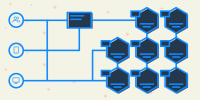Description
In this course, you will learn :
- About microservices in depth, as well as the benefits and drawbacks of using them.
- About Micro and Macro architecture, migration strategies for old systems, Docker's role in this architecture, and technologies for implementing microservices.
- You will be better prepared to implement microservices for your own use after completing this course.
Syllabus :
1. Preface
- Introduction
- Structure of the Course
2. Microservices
- Advantages
- Advantage: Continuous Delivery
- More on Advantages
- Tradeoffs, Prioritizing Advantages, & Levels
- Challenges
3. Micro and Macro Architecture
- Domain-Driven Design & Bounded Contexts
- Strategic Design & Common Patterns
- Architecture Decisions
- Operation: Micro or Macro Architecture?
- Give a Preference to Micro Architecture!
- Organizational Aspects
- Independent Systems Architecture Principles
- Variations
4. Migration
- Reasons for Migrating
- Typical Migration Strategies
- Alternative Strategies
- Build, Operation, and Organization
- Variations
5. Docker
- Docker for Microservices: Reasons
- Docker Basics
- Dockerfiles
- Docker Compose
- Variations
6. Technical Micro Architecture
- Requirements
- Reactive Programming
- Spring Boot
- Spring Boot Starter Web as Single Dependency
- Spring Boot for Microservices: Communication
- Other Communication APIs Supported by Spring
- Spring Boot for Microservices: Operation
- Spring Boot for Microservices: New Microservices & Resilience
- Go
- Go for Microservices?
- Variations
7. Appendix
- Docker Installation and Docker Commands
- Docker and Docker Compose Commands
- Acknowledgements









